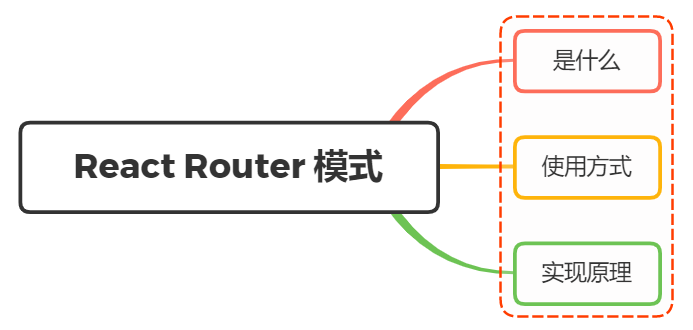# 面试官:说说React Router有几种模式?实现原理?

# 一、是什么
在单页应用中,一个web项目只有一个html页面,一旦页面加载完成之后,就不用因为用户的操作而进行页面的重新加载或者跳转,其特性如下:
改变 url 且不让浏览器像服务器发送请求
在不刷新页面的前提下动态改变浏览器地址栏中的URL地址
其中主要分成了两种模式:
- hash 模式:在url后面加上#,如http://127.0.0.1:5500/home/#/page1
- history 模式:允许操作浏览器的曾经在标签页或者框架里访问的会话历史记录
# 二、使用
React Router对应的hash模式和history模式对应的组件为:
- HashRouter
- BrowserRouter
这两个组件的使用都十分的简单,作为最顶层组件包裹其他组件,如下所示
// 1.import { BrowserRouter as Router } from "react-router-dom";
// 2.import { HashRouter as Router } from "react-router-dom";
import React from 'react';
import {
BrowserRouter as Router,
// HashRouter as Router
Switch,
Route,
} from "react-router-dom";
import Home from './pages/Home';
import Login from './pages/Login';
import Backend from './pages/Backend';
import Admin from './pages/Admin';
function App() {
return (
<Router>
<Route path="/login" component={Login}/>
<Route path="/backend" component={Backend}/>
<Route path="/admin" component={Admin}/>
<Route path="/" component={Home}/>
</Router>
);
}
export default App;
2
3
4
5
6
7
8
9
10
11
12
13
14
15
16
17
18
19
20
21
22
23
24
25
26
27
28
# 三、实现原理
路由描述了 URL 与 UI之间的映射关系,这种映射是单向的,即 URL 变化引起 UI 更新(无需刷新页面)
下面以hash模式为例子,改变hash值并不会导致浏览器向服务器发送请求,浏览器不发出请求,也就不会刷新页面
hash 值改变,触发全局 window 对象上的 hashchange 事件。所以 hash 模式路由就是利用 hashchange 事件监听 URL 的变化,从而进行 DOM 操作来模拟页面跳转
react-router也是基于这个特性实现路由的跳转
下面以HashRouter组件分析进行展开:
# HashRouter
HashRouter包裹了整应用,
通过window.addEventListener('hashChange',callback)监听hash值的变化,并传递给其嵌套的组件
然后通过context将location数据往后代组件传递,如下:
import React, { Component } from 'react';
import { Provider } from './context'
// 该组件下Api提供给子组件使用
class HashRouter extends Component {
constructor() {
super()
this.state = {
location: {
pathname: window.location.hash.slice(1) || '/'
}
}
}
// url路径变化 改变location
componentDidMount() {
window.location.hash = window.location.hash || '/'
window.addEventListener('hashchange', () => {
this.setState({
location: {
...this.state.location,
pathname: window.location.hash.slice(1) || '/'
}
}, () => console.log(this.state.location))
})
}
render() {
let value = {
location: this.state.location
}
return (
<Provider value={value}>
{
this.props.children
}
</Provider>
);
}
}
export default HashRouter;
2
3
4
5
6
7
8
9
10
11
12
13
14
15
16
17
18
19
20
21
22
23
24
25
26
27
28
29
30
31
32
33
34
35
36
37
38
39
40
# Router
Router组件主要做的是通过BrowserRouter传过来的当前值,通过props传进来的path与context传进来的pathname进行匹配,然后决定是否执行渲染组件
import React, { Component } from 'react';
import { Consumer } from './context'
const { pathToRegexp } = require("path-to-regexp");
class Route extends Component {
render() {
return (
<Consumer>
{
state => {
console.log(state)
let {path, component: Component} = this.props
let pathname = state.location.pathname
let reg = pathToRegexp(path, [], {end: false})
// 判断当前path是否包含pathname
if(pathname.match(reg)) {
return <Component></Component>
}
return null
}
}
</Consumer>
);
}
}
export default Route;
2
3
4
5
6
7
8
9
10
11
12
13
14
15
16
17
18
19
20
21
22
23
24
25
26
# 参考文献
https://juejin.cn/post/6870376090297171975#heading-9
https://segmentfault.com/a/1190000023560665
